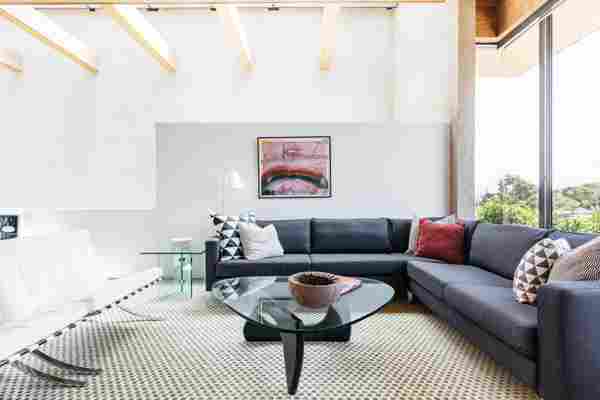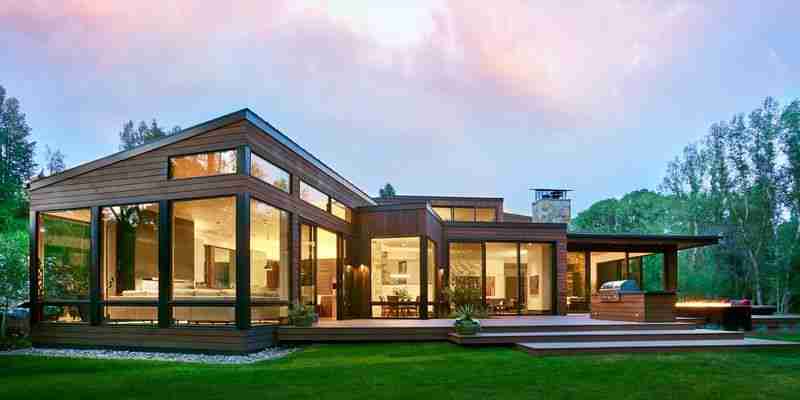October 03,2023
Best Photos of Modern Exteriors
by Jennifer Cameron inHome Furnish
What Is the Modern Decor Style?
The word “modern” is one of the most misused phrases in decorating. Often confused with contemporary style, today’s modern style is based on a design movement that was birthed around the turn of the 20th century. Modern style furnishings and decor celebrate natural materials, neutral or earthy colors, and the elimination of unnecessary detailing. While you may see a range of colors in contemporary styling, modern styles would have monochromatic colors.

History of the Modern Style of Decor
With roots in German and Scandinavian architecture and design, the modern style is simple and unadorned. It is connected to the age of machination and is often referred to as that of the 1920s to 1950s. The modern style movement continued to grow in popularity throughout the first half of the 20th century, and later derivatives of this style are known as midcentury modern and postmodern.
What Does Scandinavian Architecture Entail? Scandinavian architecture and design involve bright, neutral colors; open spaces; and large windows all meant to maximize light in the space. There's also a focus on clean lines and natural materials to evoke a sense of simplicity and comfort.
One of the key beliefs behind the modern design movement is the idea that “form follows function.” In other words, the design of all furnishings and decorative objects should reflect its intended purpose, and if a furnishing, decor, or decorating detail does not have a practical purpose, then it can be eliminated.
Typical Characteristics of a Modern Space
This philosophy behind the modern style makes it a perfect decorating choice for those who like simple, uncluttered spaces with clean lines and a lack of fussy adornments. It goes well in the open floor plans that accompanied the development of this style.
If you're thinking of decorating a space in a modern style, here are a few things you should know:
Structural elements (such as concrete or beams) often left exposed
Emphasis on horizontal and vertical lines with fewer curves
Lack of fussiness or fluff
Low, horizontal furnishings with clean lines
Celebration of natural light and unadorned windows
Natural materials such as unpainted wood, metals, leather, and natural fibers
A neutral or “natural” color palette
Reflective surfaces such as steel, chrome, or glass
Natural woods and wood veneers
Modern vs. Contemporary Style
Contemporary style is not born out of a certain era. It changes as time evolves, and can incorporate modern elements. For example, in a few more decades, a new style will be called contemporary because it is what is in style. Contemporary furnishings have more distinctive forms and often can include curved furnishings.
Beginning in the 1990s, contemporary decor followed the minimalist trend and it can include stark contrasting colors with black and white, while modern is based on neutrals rather than being stark and cold. Contemporary pieces may be simply decorative, while modern pieces must have a function.
The battle to define modern style will probably continue, as it is widely debated. But at its root, the modern style reflects a certain era. That said, many people incorporate pieces of modern style into their homes and offices because of its simple, functional nature. As many people strive for simplicity in life—and there's an emphasis on decluttering—perhaps they will be drawn to the modern style because it does seem to simplify everything. That goes along with the design trend of open-concept spaces.
Houzz Ideas You'll Love - June, 2022
Great design makes all the difference - bold material choices were just what was needed to give this little bathroom some BIG personality! Our clients wanted a dark, moody vibe, but had always heard that using dark colors in a small space would only make it feel smaller. Not true! Introducing a larger vanity cabinet with more storage and replacing the tub with an expansive walk-in shower immediately made the space feel larger, without any structural alterations. We went with a dark graphite tile that had a mix of texture on the walls and in the shower, but then anchored the space with white shiplap on the upper portion of the walls and a graphic floor tile (with mostly white and light gray tones). This technique of balancing dark tones with lighter tones is key to achieving those moody vibes, without creeping into cavernous territory. Subtle gray/blue/green tones on the vanity blend in well, but still pop in the space, and matte black fixtures add fantastic contrast to really finish off the whole look!
Best Photos of Modern Exteriors
There's nothing like a modern home exterior that boasts clean lines, expansive windows, and an undeniably sleekness. Whether you prefer the look of industrial metals, or would rather the warmth of wood, there are endless modern home styles to love, and the exteriors are no exception. Plus, the large windows and open-concept layout allows you to showcase your interiors to the outside world, from omitting a warm glow at night, to offering a glimpse into your design scheme by day. Kick your home’s style factor into overdrive and get inspired by these modern façades.

Here, we share a selection of Dering Hall designers' sleek modern homes, from Alaska to Maine, and everywhere in between.
